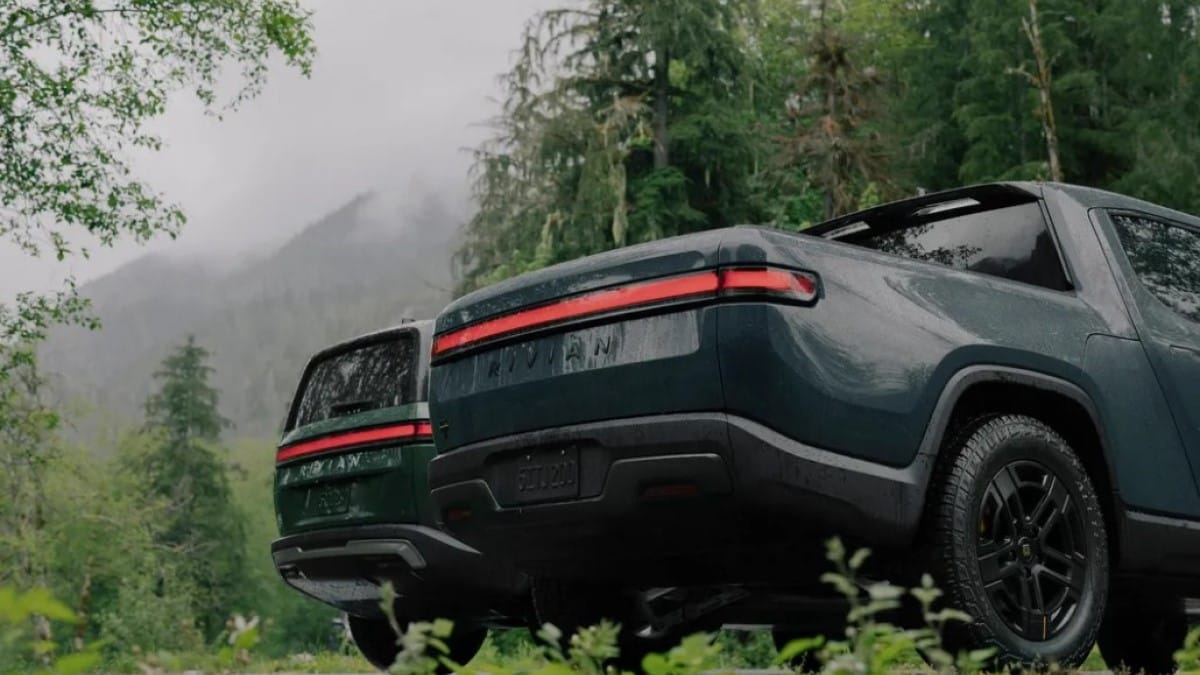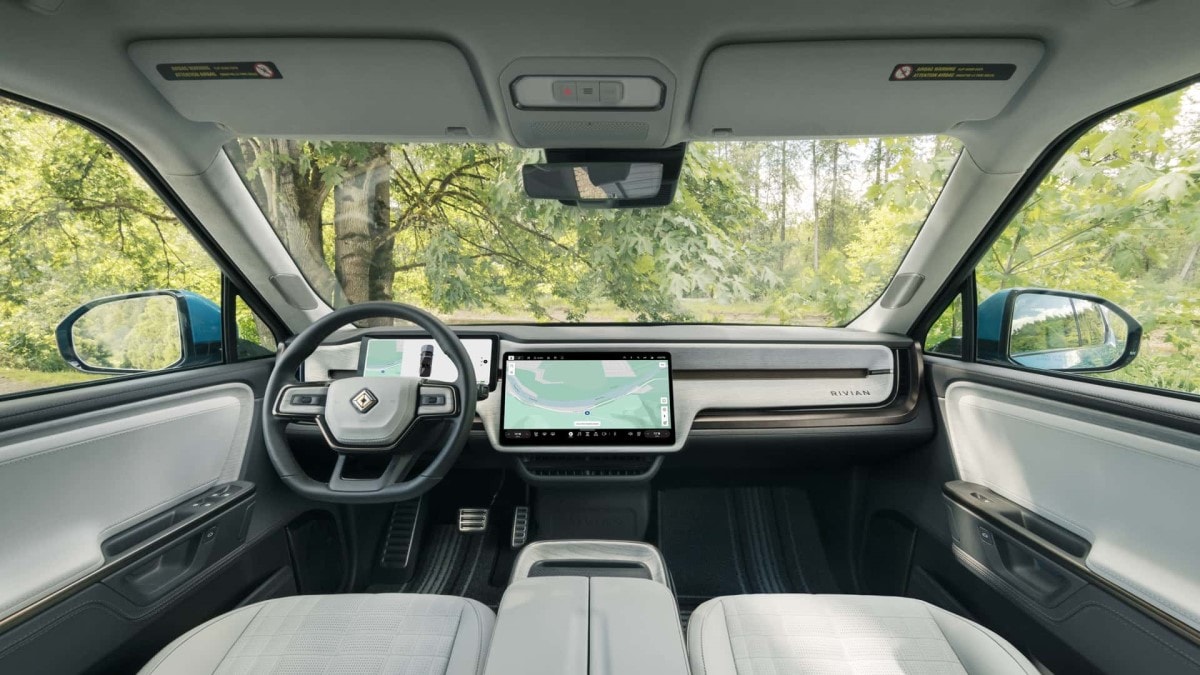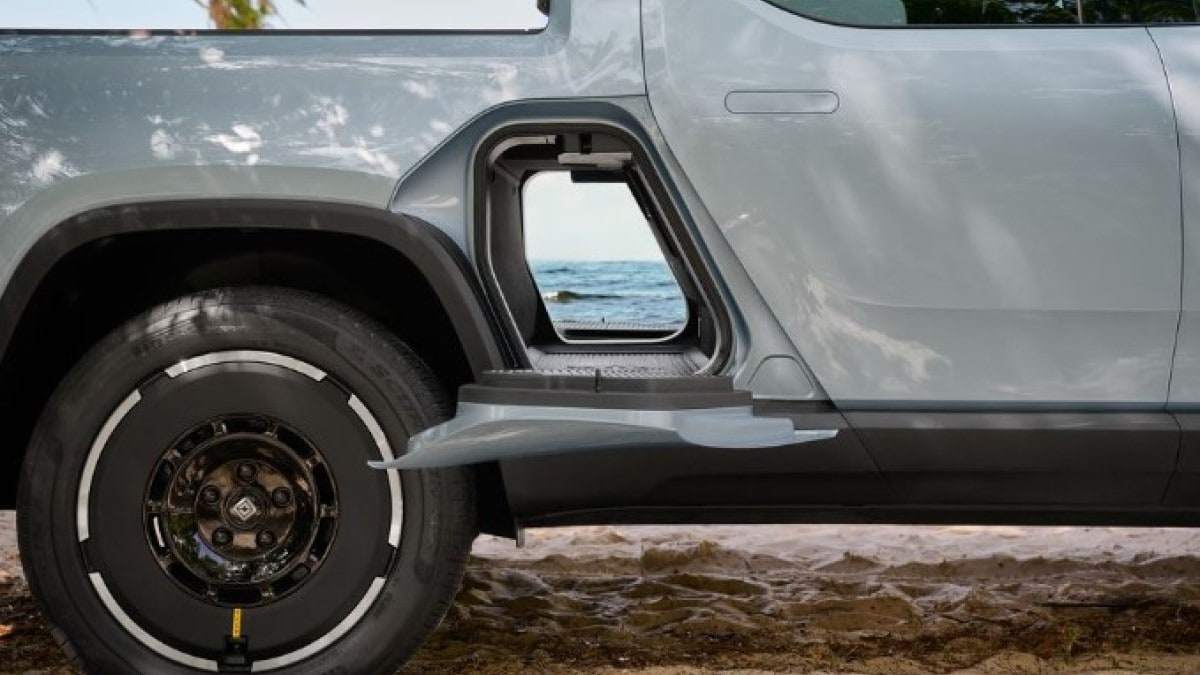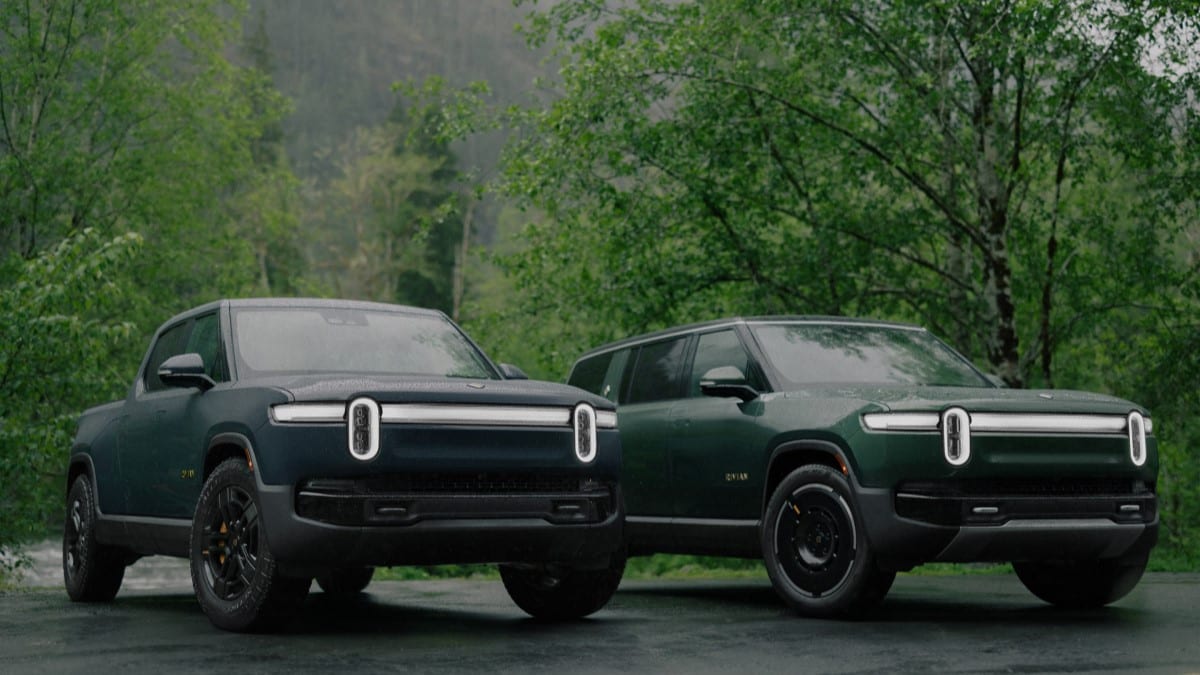Just three years after launching its first products, electric vehicle (EV) startup Rivian has revealed the second generation of its R1S SUV and R1T pickup.
They don’t look radically different. But the company says that “hundreds of hardware improvements, performance upgrades, a fully redesigned software experience, and evolved in-house drive systems” justify considering these a new generation. But the platform hasn’t changed. Traditional automakers might consider this a thorough mid-cycle update, not a pair of redesigns.
Semantics aside, there’s no doubting the update.
Pricing for the second-generation R1S will start at $77,700 (after factoring in the $1,800 delivery fee). The R1T will start at $71,700 delivered.

Tri- and Quad-Motor Power Options
Power for the Dual-Motor Standard (533 horsepower) and Dual-Motor Large/Max (665 horsepower) models appears unchanged. But new tri-motor versions come in at 850 horsepower. Quad-motor editions will top out at a full 1,025 horsepower.
In R1T form, the quad-motor model will leap from 0-60 mph in just 2.5 seconds. It outputs 1,198 pound-feet of torque in launch mode. Rivian says that a similarly equipped R1S SUV will do the 0-60 mph sprint in 2.6 seconds.
Buyers get more choice in batteries for the 2025 model year. “New Large and Max battery packs have redesigned modules and more efficient packaging, making them easier to manufacture and service while offering up to an estimated 420 miles of range,” Rivian says.
But customers willing to forego some range for lower prices can opt for a new lithium-iron-phosphate battery. It travels up to 270 miles between charging sessions.
New 22-inch tires, available with cool aero disc wheels, reduce drag. An “updated suspension and air springs make for a smoother on-road ride without compromising off-road capability.”
New Sound System, Tinting Glass Roof

Inside, buyers get the option of a premium audio system with Dolby Atmos immersion. A new subscription service, Rivian Connect+, includes the Apple Music catalog, streaming video through Google Cast, and access to more than 3,000 apps. Rivian hasn’t published subscription pricing information.
A new dynamic glass roof tints at the touch of a button and the company has redesigned its touchscreen interface using the Unreal Engine graphics system that powers many popular video games.

Updated Autonomy Platform
Buyers also get a free trial of the new Rivian Autonomy Platform through the end of 2024, though the company hasn’t disclosed pricing beyond that. The system uses “11 cameras, five radars, and AI prediction technology.” It will keep pace with traffic, steer on many highways, and change lanes on command.
“A premium version of the system, Rivian Autonomy Platform+, features an even broader set of capabilities,” the company says. “Lane Change on Command is available to start, with Enhanced Highway Assist available later this year, and expanded road coverage to follow.”

Tech Updates You Won’t See
Rivian has also simplified the building process with technology updates that may not be apparent to the owner but could make the truck age better over time. Most of today’s cars use dozens of low-power microchips, each dedicated to just a few tasks. Rivian has reduced chips in the R1T and R1S to just seven, all high-power models able to handle many tasks.
That allowed engineers to cut 1.6 miles of wire from each vehicle. Fewer parts mean fewer things can go wrong.
Rivian says its second-generation vehicles “achieve a 15% lower standard lifetime carbon footprint than the first generation R1 platform, thanks largely to manufacturing and operating efficiencies and improvements in our materials supply chain.”
Intensifying Competition
When Rivian launched the models, they had little competition. Today, the R1T finds itself in a growing field of electric pickups, including electrified traditional options (like the Ford F-150 Lightning) and edgy Silicon Valley entries like the Tesla Cybertruck. The R1S battles a constantly growing set of luxury electric SUVs, including the BMW IX and Mercedes-Benz EQE SUV.
Improving the vehicles will certainly help keep them competitive. But Rivian’s biggest challenge may be proving that the company has staying power. With rival Fisker’s almost-certain failure in the news recently, buyers are increasingly aware that they need to evaluate the company as well as its products. Surviving long enough to introduce a second generation of its flagship products may be the best thing Rivian could do to boost confidence.
Cox Automotive, parent company of Kelley Blue Book and Autotrader, is a minority investor in Rivian.








